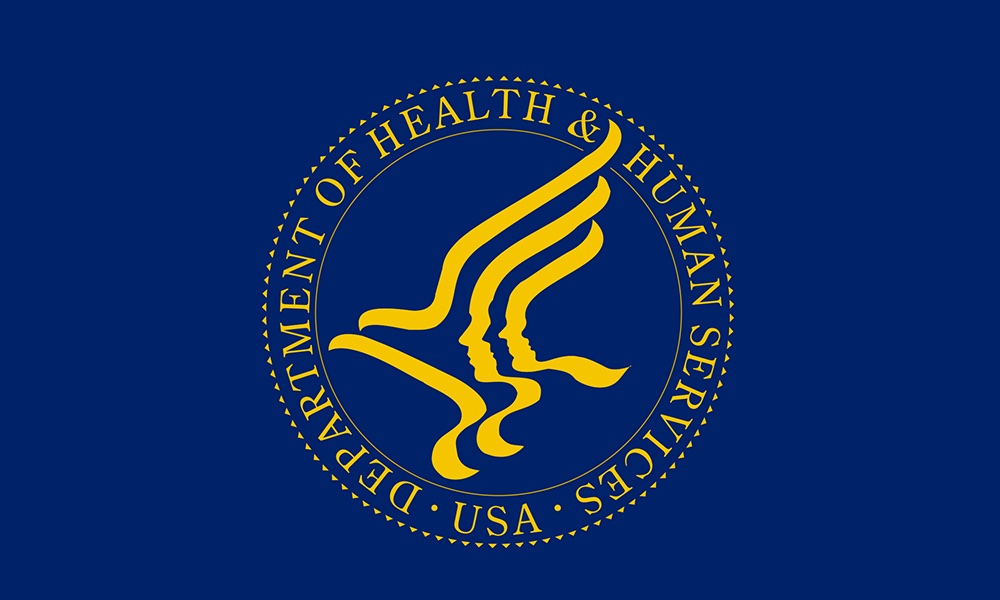The American Cancer Society estimates that in 2009 there were 192,370 new cases and 40,170 deaths from breast cancer, making breast cancer the most common cancer and the second leading cause of cancer death among women in the United States. The average lifetime risk of breast cancer in women is 1 in 8 or 12.6%.
Your risk of developing breast cancer is strongly influenced by:
- Your age
- Family history
- Reproductive factors
- Exposure to exogenous estrogen
- Exposure to alcohol
- An abnormal breast biopsy showing atypical cells
- A hereditary predisposition due to mutations in one of several breast cancer genes
The reason for this much higher death rate among African-American women may be the result of socioeconomic, cultural and behavioral factors that affect access to screening and treatment, both of which are highly correlated with survival.
Family history — having several first or second degree relatives with breast cancer, and/or relatives with breast cancer diagnosed before age 50— is one of the strongest risk factors for the development of breast cancer. There are a number of different methods used to assess lifetime risk estimates for breast cancer. These estimates are then used for counseling patients, and determining eligibility for chemo-prevention trials; and determining eligibility for MRI screening as an adjunct to mammography.
An estimated 7% of breast cancers and 10% of ovarian cancers are due to inherited mutations in two cancer susceptibility genes called BRCA1 (breast cancer 1 gene) and BRCA2 (breast cancer 2 gene). Normally, these two genes work to stop or suppress breast cancer, but when these genes have a mutation they are much less effective in suppressing cancer. Certain groups of people, particularly Ashkenazi Jews from Central or Eastern Europe, have a higher incidence of these mutations and thus more instances of hereditary breast and ovarian cancer (HBOC).
It is a misconception that breast cancer can only be inherited from the mother’s family. Half of all inherited breast cancer cases are inherited from the father’s side of the family.
BRCA1/2 gene mutations are not sex-linked. It is a misconception that breast cancer can only be inherited from the mother’s family. Half of all inherited breast cancer cases are inherited from the father’s side of the family.
According to the National Comprehensive Cancer Network Practice Guidelines: Genetic/Familial High-Risk Assessment: Breast and Ovarian, management options for women with BRCA1/2 mutations include:
- Regular monthly breast self-examination (BSE) beginning at age 18.
- Clinical breast examination (CBE) twice yearly starting at age 25.
- Annual mammogram and breast magnetic resonance imaging (MRI) starting at age 25 or earlier based on the earliest breast cancer in the family.
- Discussion of prophylactic mastectomy.
- Recommendation for prophylactic bilateral salpingo-oophorectomy between ages 35 and 40 or upon completion of childbearing, or earlier based on the earliest ovarian cancer in the family.
- For those individuals who have not elected to undergo bilateral salpingo-oophorectomy, twice-yearly transvaginal ultrasound and CA-125 screening beginning at 35 or earlier based on family history.
- Consideration of chemoprevention options for breast and ovarian cancer.
Male mutation carriers are recommended to:
- Perform monthly breast self-examination.
- Undergo twice-yearly clinical breast examination.
- Consider baseline mammogram, with annual repeat pending clinical findings on the baseline examination.
Finally, screening options for prostate cancer, melanoma and pancreatic cancer (despite the absence of proven clinical benefit) should be discussed as well.
| Class | Feature | Percentage |
|---|---|---|
| Mucocutaneous | Trichilemmomas Acral keratoses Verucoid or papillomatous papules |
90-100 |
| Motor Skills | Motor, speech and/or mild developmental delay | 25 |
| Head | Macrocephaly with normally sized ventricles | 38 |
| Thyroid | Goiter Adenoma |
75 |
| Breast |
Fibrocystic disease Fibroadenomas Fibrocystic disease |
67 |
| Intestinal | Ileal, stomach and colonic hamartomatous polyps | 40–60 |
| Genito-urinary (female) | Uterine leiomyomas (multiple and early onset) | 44 |
| Soft tissue tumors and cancer | Lipomas Hemangiomas Thyroid Cancer Female Breast Cancer Endometrial Cancer |
75 10-40 5-10 25-50 5-10 |
People with a clinical or molecular diagnosis of CS should undergo screening for component cancers at ages listed below, or five years younger than the earliest onset of the cancer in the family (whichever comes first):
- Annual physical examination of the neck by age 18 and a baseline thyroid ultrasound is recommended for thyroid cancer screening.
- Semi-annual CBE and monthly SBE should start by age 25 and annual mammography and breast MRI screening between the ages of 30 and 35 for women.
- Annual blind endometrial biopsy between the ages of 35 and 40 prior to menopause, and trans-abdominal ultrasound post menopause for endometrial cancer screening.
- Consider annual dermatologic examination.
Two types of Li Fraumeni syndrome have been described: classic Li Fraumeni syndrome (LFS) and Li Fraumeni-like syndrome (LFL):
| Classification | Description |
|---|---|
| Classic LFS | Patient with a sarcoma diagnosed before age 45, and A first-degree relative with any cancer before age 45, and A first- or second-degree relative with any cancer before age 45 or sarcoma at any age |
| LFL Birch Eeles |
Patient with any childhood cancer or sarcoma, brain tumor, or adrenocortical carcinoma diagnosed before age 45, and A first- or second-degree relative diagnosed with a typical LFS cancer (sarcoma, breast cancer, brain tumor, adrenocortical carcinoma, or leukemia) at any age, and A first- or second-degree relative with any cancer under the age of 60 years Two first- or second-degree relatives with LFS-related malignancies at any age |
| Chompret | Patient with sarcoma, brain tumor, breast cancer, or adrenocortical carcinoma before age 36 years, and at least one first- or second-degree relative with cancer (other than breast if the patient has breast cancer) under age 46; or a relative with multiple primaries at any age; or a proband with multiple primary tumors, two of which are sarcoma, brain tumor, breast cancer, and adrenocortical carcinoma, with the initial cancer occurring before the age of 36, regardless of family history; or A proband with adrenocortical carcinoma at any age of onset, regardless of family history |
LFS appears to be rare with fewer than 400 families reported worldwide. As a result, it has been difficult to characterize the specific cancers associated with LFS.
Screening guidelines include:
- Monthly BSE beginning by age 18.
- CBE twice yearly beginning at age 20-25 or 5-10 years before the earliest known breast cancer in the family (whichever comes first).
- Annual mammogram and breast MRI beginning at ages 20–25 or earlier depending on the family history.
- Discussion of prophylactic mastectomy.
Findings from several studies suggest that prophylactic gastrectomy, rather than regular endoscopic screening, is the best preventive measure in individuals with CDH1 mutations
While there are no definitive breast cancer screening or risk reduction recommendations for women with HDGC, it is suggested that they follow current recommendations for women with other hereditary breast cancer predisposition syndromes (i.e., HBOC):
- Regular monthly BSE beginning at age 18.
- CBE twice yearly starting at age 25.
- Annual mammogram and breast magnetic resonance imaging (MRI) beginning at the age of 30-35 or earlier based on the earliest breast cancer in the family. Some recommend annual breast ultrasounds in place of breast MRI.
- Discussion of prophylactic mastectomy; however the exact risk reduction has not been established.
Also, most lobular breast cancers are estrogen receptor positive, and therefore women with CDH1 mutations may potentially benefit from chemoprevention through the use of tamoxifen or raloxifene, although there are no clinical trial data to support this.
Men and women with CDH1 mutations should be screened for gastric and colon cancer:
- Individuals who have not yet undergone a prophylactic gastrectomy should undergo a detailed endoscopic procedure with multiple random biopsies and biopsies of suspicious lesions every 6 to 12 months beginning at the age of 16. It is possible that the use of chromoendoscopy, which uses a mucosal dye to enhance subtle lesions, may improve the detection rate of early diffuse gastric cancer.
- If colon cancer is present in the family history, it is recommended to follow the National Comprehensive Cancer Network guidelines by beginning colonoscopies at age 40 or 10 years prior to the earliest diagnosis in the family. Earlier reports suggested an association of colon cancer with HDGC; however, there are conflicting data that do not support the role of CDH1 germline mutations in the development of colon cancer.
The value of gastric cancer surveillance is controversial since the effectiveness of endoscopy in detecting early diffuse gastric cancer lesions has not been proven. Findings from several studies suggest that prophylactic gastrectomy, rather than regular endoscopic screening, is the best preventive measure in individuals with CDH1 mutations since the diffuse type of gastric cancer spreads submucosally and does not form a discrete mass that is readily detected with endoscopy. It remains unclear at what age prophylactic gastrectomy should be recommended, although several studies suggest that prophylactic gastrectomy should be considered prior to the age of 30 years since the risk of gastric cancer by that age is approximately 4%.
Women with PJS:
- Regular monthly BSE beginning at age 18.
- Annual CBE beginning at age 25.
- Annual mammography beginning between 25-35 years of age.
- Annual pelvic examination, pelvic ultrasound, and Pap smear beginning at age 20.
Men with PJS:
- Annual testicular examination beginning at age 10.
For Men and Women with PJS:
- Upper and lower endoscopy and small bowel follow-through every two years beginning at the age of 10. Some studies have suggested beginning stomach and small bowel screening at 8 years of age. Hinds and colleagues found that laparotomy for bowel obstruction was performed in 30% of individuals by age 10 years.
- Colonoscopy every 2-3 years beginning at the age of 25.
- Pancreatic cancer screening by endoscopic ultrasound or abdominal ultrasound every 1-2 years beginning at the age of 30. Pancreatic cancer screening has generally not been routinely recommended in PJS, and is being evaluated in clinical trials (i.e., CAPS-3 study).
Interestingly, women who carry only one ATM mutation, that is they do not have the disease, are at an increased risk to develop breast cancer. One percent of the general population is estimated to carry only one ATM gene mutation.
Currently, there are no proven guidelines for managing ATM heterozygotes. Due to the possibility of increased sensitivity to ionizing radiation in ATM mutation carriers, the role of mammography at an earlier age in these individuals is unclear. Breast MRI may offer a better screening strategy, but currently there are no data to support this.




